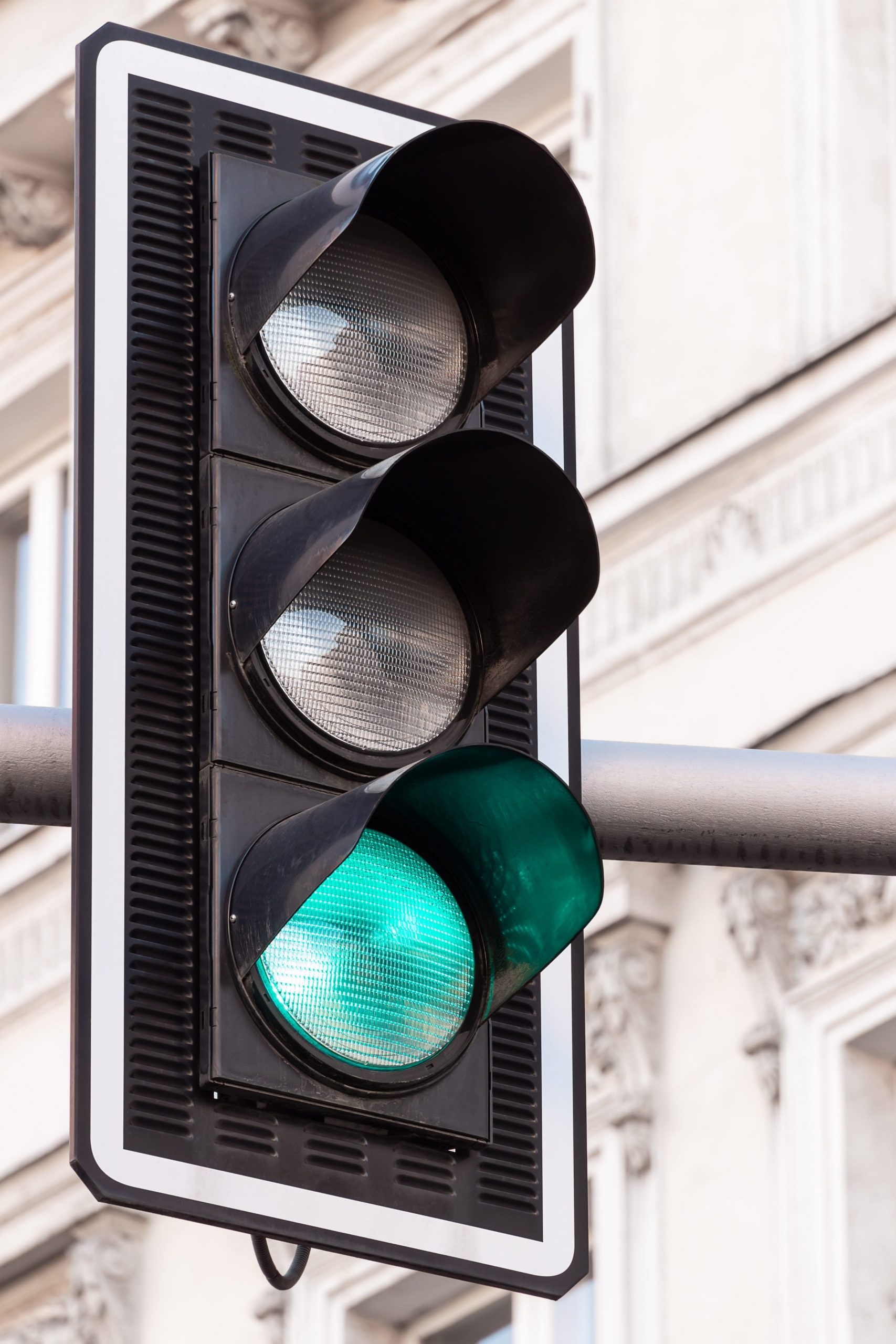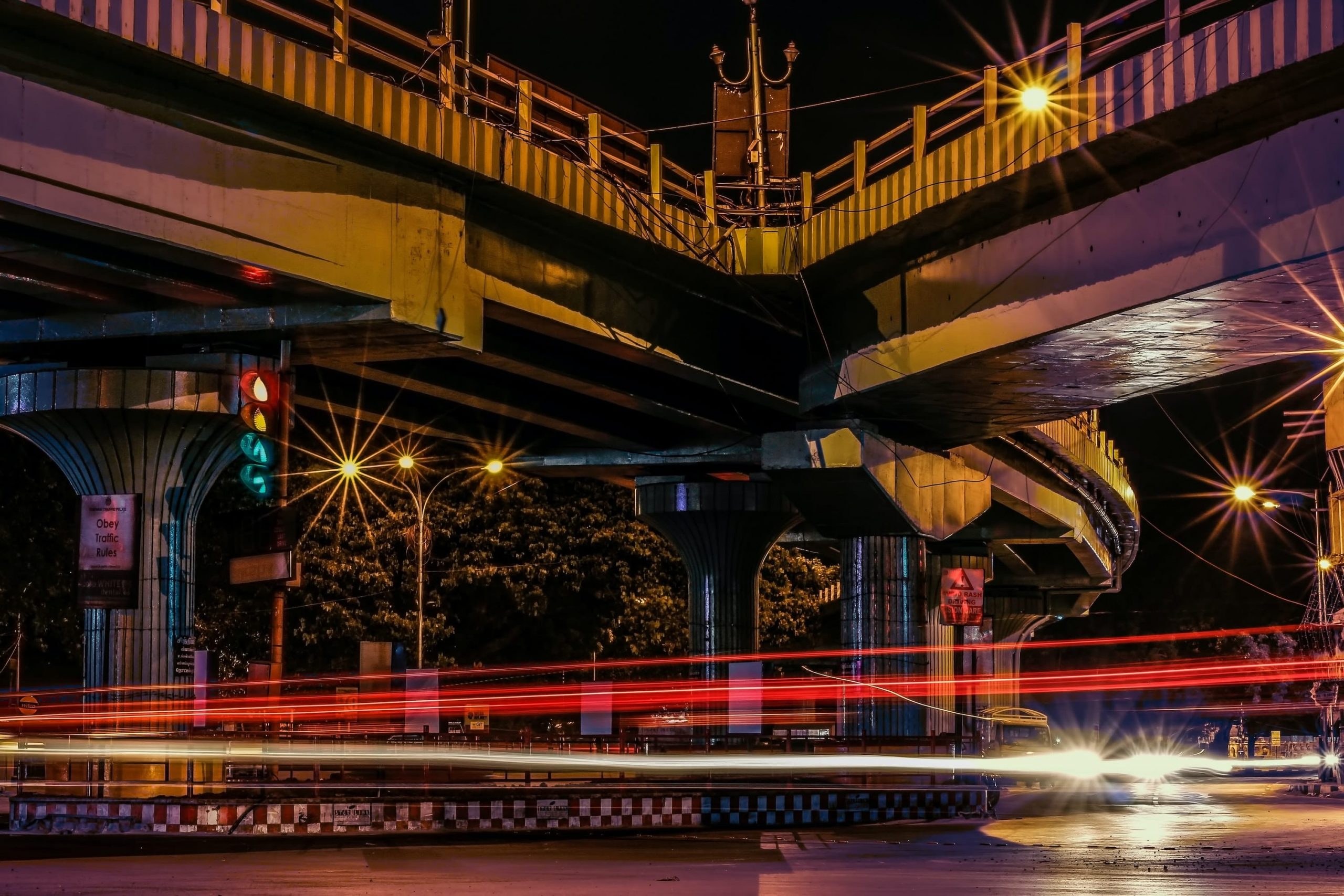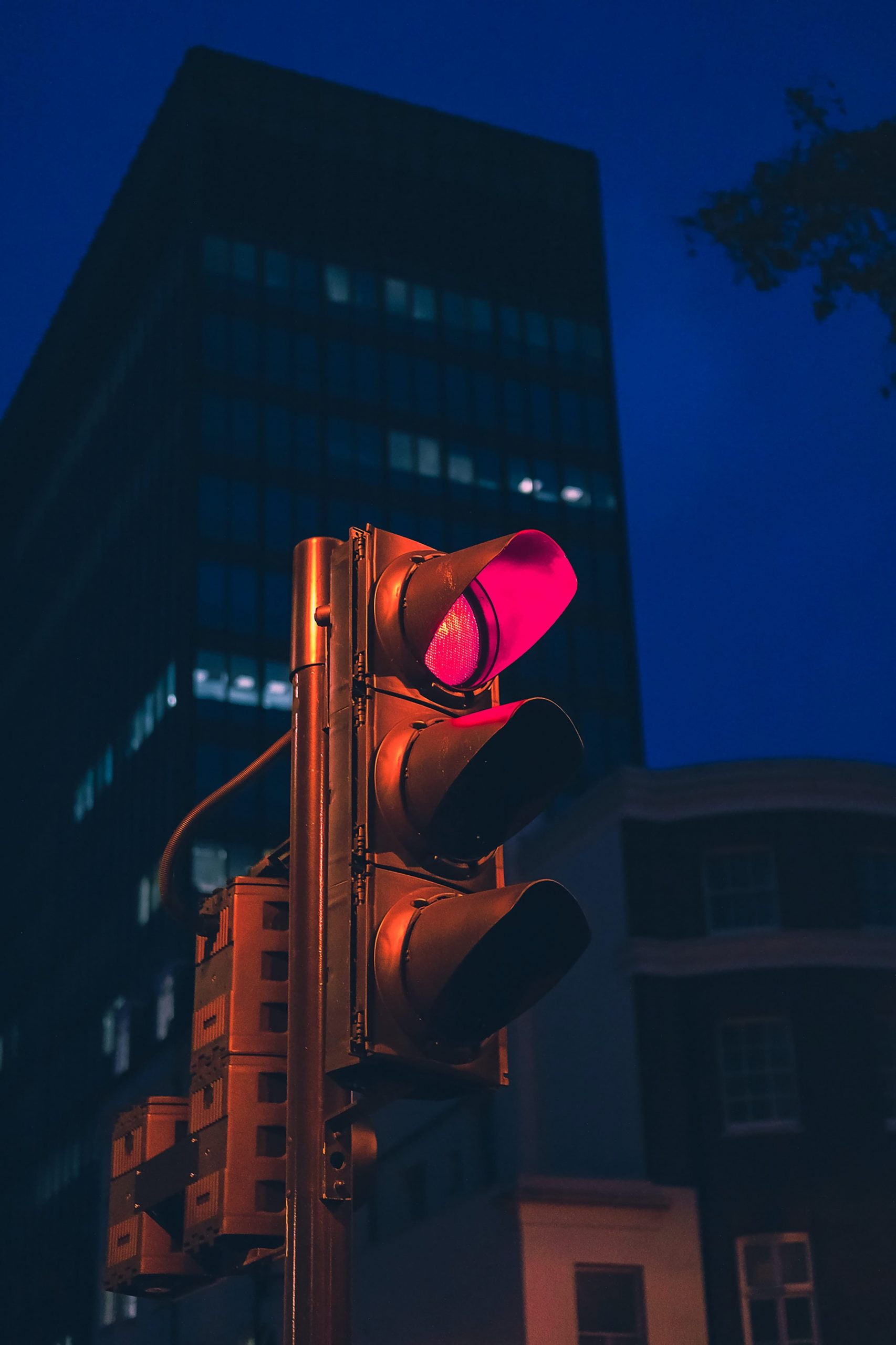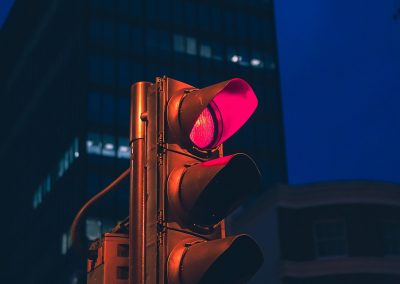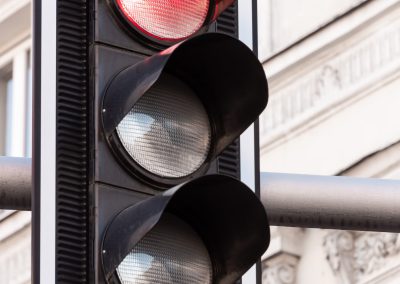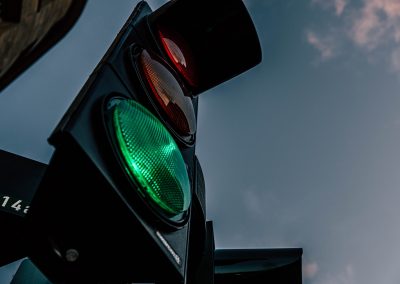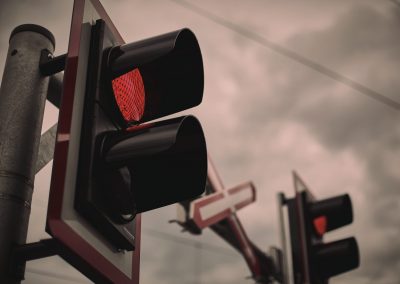
Road traffic lights
Traffic light systems
Traffic lights
Increasingly busy intersections require quality solutions for vertical light signaling or traffic light systems.

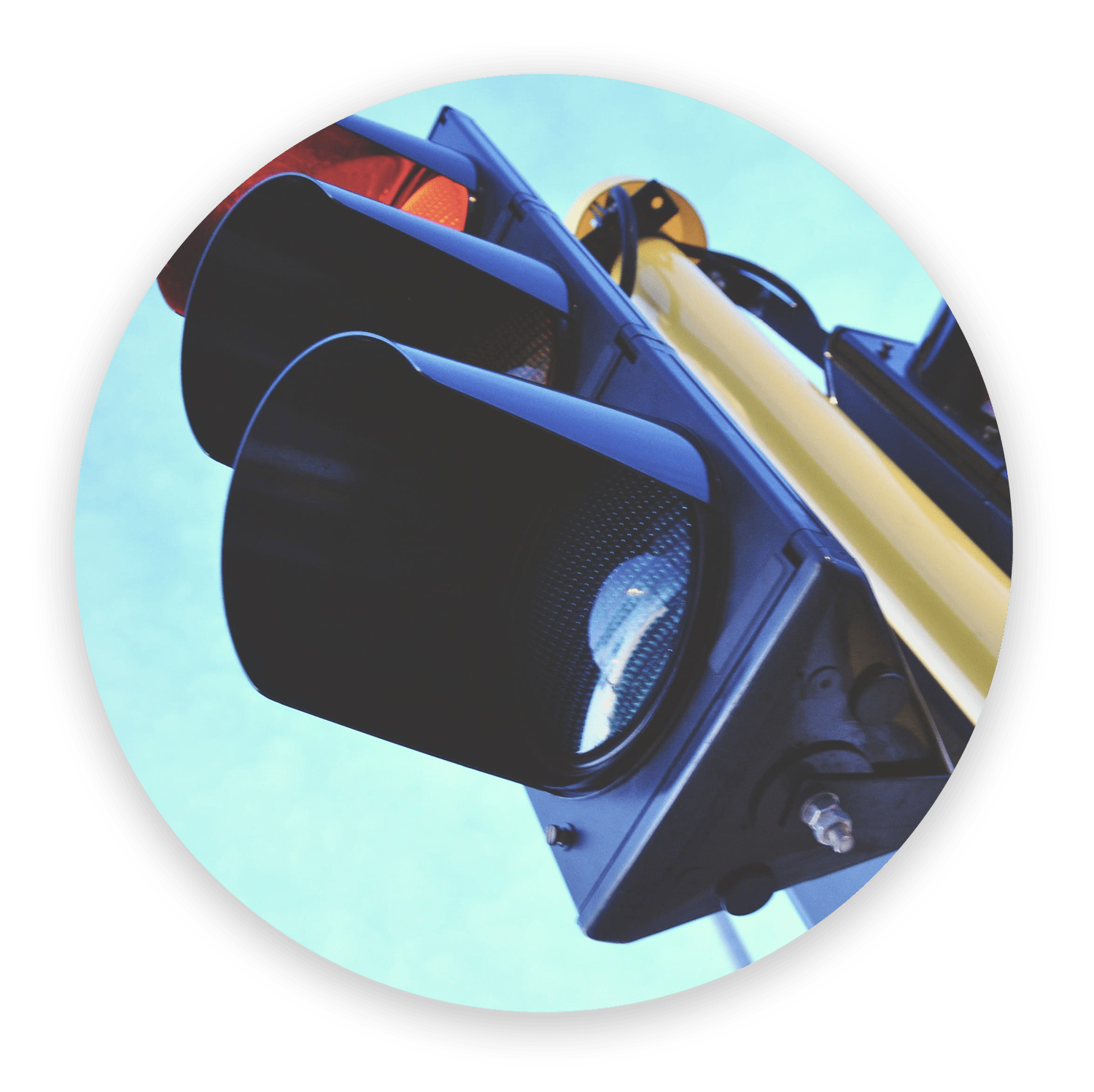
We who deal with traffic like to say that we have three main tasks:
1. Security,
2. Security,
3. Security.
Traffic lights work 24 hours a day, 7 days a week, 365 days a year.
For years.
No rest, no matter the day of the week.
And there is no room for error.
And for all these reasons – safety and reliability are more important than anything. We all know what can happen by disregarding traffic lights.
________
And don’t worry, “green for everyone” won’t happen to us – no matter how much some talk about it.
Traffic lights
Road traffic signals, or by the common name – traffic lights, are used for light regulation of traffic at intersections, roundabouts, and pedestrian crossings.
All components of the system are technically and factory tested and certified in compliance with the highest safety standards (that is why in the above text, we list the main “three” tasks: security, security, and again security).
Our employees are trained and authorized to perform diagnostic and service work and procedures to make the traffic light systems work flawlessly. Also, in cooperation with our partners, we can offer consulting and development of traffic-technical solutions related to traffic lights and the supply, installation, and programming of traffic light system equipment.
Also, we are equipped in such a way that we can offer regular and emergency system maintenance, where we are available 24/7/365.
We are regularly educated by following technical and traffic innovations that will enable even better and safer traffic by implementing technically or traffic better and more advanced solutions.
Basic elements:
- traffic light device with a microprocessor control unit (located inside the control cabinet) consisting of:
– electrical panels of the processor part (processing and execution of the “entered” traffic-technical solution with the parameters of a specified intersection) and elements for control and verification of internal components and external light signals
– electrical panel for control of external signal groups
– electric panel for signal processing from inductive or video detectors
– electric panel for processing the coordination signal (green wave)
– interface-control unit for selecting the mode of operation of the traffic light device and parameter display
– electrical power supply and protection elements (power supplies, circuit breakers, and switches)
– connection terminals for receiving external equipment cables (lanterns, announcement buttons, sound signals, detectors, coordination)
- external signaling equipment (driving, walking, cycling, tram, and special lanterns)
– more recently, LED lanterns have been switched due to the well-known advantages over classic lanterns (the old solution of a special traffic light bulb with filament or halogen bulbs)
– can be with one light (additional green driver’s arrows or pedestrian yellow flashing lights), then two lights (red and green pedestrian, bicycle, or tram light), and with three lights (red, yellow, and green for vehicles)
– standard profiles fi 200 mm and fi 300 mm
– LED lantern design with the possibility of signal attenuation at night (due to too hard night glare of LED sources)
- pillars, consoles, and portals to accommodate lanterns
– LED lantern design with the possibility of signal attenuation at night (due to too hard night glare of LED sources)
– pillars of a certain height are most often used and for large and more significant intersections consoles, or portals
- cables for connecting the controller and the lantern
– a particular type of multicore cables that are designed to work in extremely difficult conditions (presence of water-moisture in the cable duct, resistance to external influences, resistance to minor mechanical damage, vibration, etc.)
Additional elements that are used more often:
- inductive loop detectors built into the asphalt surfacing
– serve to announce the arrival of a vehicle in a certain lane to request a green light
– this is an older method of detection that is gradually being abandoned, is subject to damage and failures due to emergency works or new asphalting in the loop zone or damage to the loop due to subsidence of the asphalt surfacing due to the passage of heavier vehicles
- video detectors (cameras)
– same function as with inductive loops, a newer detection method
– are not subject to damage because they are not on the asphalt surface (they are placed on pillars, brackets, or portals)
- announcement pedestrian keys
– equivalent to vehicle detectors, there are also pedestrian announcement buttons, which press the device button to request crossing the road at a marked pedestrian crossing (waiting time for a green light may be different because it depends on vehicle traffic density and other pedestrian announcements)
- sound signals for the blind and visually impaired
– enable easier and simpler movement for blind and partially sighted people in a way that they signal the appearance of red or green light for pedestrians with different sound (in the Republic of Croatia, red light is announced with a slower rhythm of signalers, and green with faster rhythm)
– have a relief on the side to show the blind person the direction of oncoming vehicles, possible pedestrian islands on the road, the number of traffic or road lanes to the crossing to the opposite side, etc.)
– in newer and more modern systems, the volume (intensity) is automatically adjusted to the level of external noise (by increasing the traffic noise, the sound on the signaling device is also increased)
– more modern systems have the possibility of automatic night shutdown (be careful not to disturb the surrounding occupants with signal noise)
– it is possible to set several types of sounds (mainly depending on the direction in which the pedestrian crossings extend, for example, one kind of sound in the east-west direction and the other kind of sound in the north-south direction)
- traffic coordination system (“green wave”)
– classic devices (exchanges) for coordination of all traffic light devices which are connected to the exchange by wire connection
– possibility of sending and receiving signals to traffic light and from the device with reports of possible errors (the device does not work and does not respond due to power failure or potential interruption or interference in the coordination cable)
– all settings on the devices are conditionally timed and conditioned by the coordinator
– newer coordination systems no longer use physical but “virtual coordinators” (for example, the interconnection of traffic light devices via GPS signals)
- counters-displays of remaining time (for pedestrians or drivers)
– they are used to display the remaining seconds until the green light on the driver’s or pedestrian’s lantern stops
- traffic control monitor center
– serves for centralized monitoring or management of traffic light devices and display of the status of each device separately (from one or more places)
– possibility of connection of traffic light devices of a somewhat older generation (with certain limitations of these devices)
– with the implementation of the control center, traffic flows are managed much better, faster, and easier, which enables more flowing roads and fewer traffic jams
Modes of operation of traffic light intersections
*the traffic light device can work in only one mode at a time
- time operation – the processor manages external driver and pedestrian signals according to a predefined program regardless of traffic load
- detector operation – the device collects information from the announcement on the driver and pedestrian detectors and adjusts the signal duration depending on the traffic load, always paying attention to the minimum and maximum defined times
- coordination (green wave) – the device works in time operation following the signals from the coordination center (physical or virtual)
- manual control – used when performing certain works at intersections or when the need for manual traffic regulation (congestion of the intersection with a large number of vehicles, the passage of protected persons, etc.)
- flashing yellow light – may be due to operator selection (in case of a temporary closure of a part of the road, need for service or control of certain external signal elements, etc.) or may occur automatically as a result of activation of one of the safety devices in the signaling device and device safety mode)
- all red – only by selecting the operator and after the need to switch from flashing yellow light to the standard operation of the device (to safely “empty” the intersection)
Questions, misconceptions, and myths
As we believe that education is an extremely important component in traffic, here are frequently asked questions, misconceptions and some “myths”
Q: In a close encounter or traffic accident at a traffic light intersection, both drivers claim that their green light was on. How is that possible?
A: Before we answer, we will explain the term collision. A collision at a traffic light intersection is a simultaneous unwanted occurrence of green signals in signal groups that we define as collisions. We will explain this with the example of the most common classic X-intersection. The collision is considered to be the occurrence of simultaneous green light in blocked groups (say traffic lanes – directions that intersect below 90 degrees).
And here is the answer to the question:
First, the above situation is not possible because when programming a traffic light device, collision signal groups are defined.
Second, the traffic light device continuously controls external signals and self-diagnostics (“constant self-examination and control”).
Third, the light signals are constantly and permanently controlled by the traffic light with voltage and current controls. This means that even in the event of a possible failure of a control or monitoring unit, the device automatically switches to the “flashing yellow light” safety mode and remains in that mode until the service intervention.
Q: On two separate lanes for moving vehicles in the same direction, if there are two signal groups for vehicles (for example, one lane is for straight and right, and the other for left), sometimes green signals for drivers are switched on at the same time, and sometimes that is not the case?
A: It is a standard operation of the traffic light system. It is a detector operation. The green signal will not turn on if there are no vehicles in the corresponding lane.
Q: We have noticed that the green light for vehicles or pedestrians does not always have the same duration at the same intersection?
A: Depending on the traffic density, in the detector mode of the traffic light device, the duration of the green signals is changed. Of course, there is always a minimum guaranteed duration of green time (for example, only one vehicle “announced”) and a maximum duration of green time (if traffic is heavy, constant announcements of vehicles and pedestrians). Thus, the duration of a green signal always ranges between the minimum and maximum for a particular signal group. For each traffic light intersection, depending on the expected or traffic analysis measured traffic load, diagrams of the duration of individual signals are made.
Q: What are the protective times, or the times of collision and leaving the intersection?
A: After the driver’s green signal in a particular signal group has expired, the signal group switches to a yellow light whose duration is approximately between 3-4 seconds (depending on the intersection configuration). The signal then toggles to red.
Meanwhile, a red light is still running in the next collision group.
Only after the expiration of the duration of “all red signals” (the duration of which also depends on the intersection configuration and serves to discharge the intersection), there is a red-yellow (typically 2 seconds), and then a green signal.
What does it all mean?
It means that the protection time between the appearance of green signals in collision groups ranges from approximately 8 to 15 seconds. If the vehicle enters the intersection in the first couple of seconds of the yellow signal (since it could not be stopped safely, because it was just before the crossroads), the vehicles in the collision group can safely go to their green signal without fear of colliding with the collision vehicle direction.
Of course, the fundamental and primary conditions should be met – to respect the traffic light signals and regulations.
Q: We noticed that one red or green light for pedestrians or vehicles doesn’t work on one lantern.
A: Quality maintenance of the system includes, among other things, physical visits to traffic light intersections. Reports on the problem in the work of traffic lights can be made by road patrol services, police patrols, and all other services that often and frequently use traffic lights (driving schools, taxi services, local city transport, and others).
A fault may occur in one light of the signal group between rounds in such a way that the same light does not work (due to a malfunction or physical damage). As a control, there is always another light of the same signal group (repeater). Due to practical, safer, and simpler traffic, this situation is not legally considered an increased risk with the requirement to switch the device to a flashing yellow light (safety mode). However, this option can be set programmatically.
If the mentioned light failure occurred on all lanterns of the same signal group (signals of a particular color), there would be an immediate shift to safety mode (flashing yellow light) because then the traffic participant cannot determine the current, actual state of the signal.
Q: I have been waiting for the traffic light for a long time, and the green light never turns on.
A: If the system is designed as a detector (with an inductive sensor in the asphalt), it is necessary to reach the detection zone with the vehicle (above the detector-loop itself). Many times we see vehicles that, instead of stopping at the marked stop line, stop several meters before it. In this way, the detection cannot be performed, and the system cannot recognize the arrival of the vehicle and forward the request for the green light.
Q: A green light is on at all pedestrian lanterns (in all directions). Isn’t that a collision?
A: No. During that time, all driver signals are red.
Conclusion
Modern microprocessor traffic light devices in regards to former devices with relay technology:
– today are safer and more reliable in their work than ever before
– provide insight into a large number of parameters
– according to the traffic-technical solution, it is easier to change the parameters (reprogramming) in regards to the former devices with relay technology (used until the end of the 90s of the last century)
– by connecting to the control center, they provide much larger possibilities than the traffic light devices of the older generation
– the use of LED light sources extraordinarily extends the life of the source, reduces the need for interventions, and not least, saves on electricity consumption
– LED lanterns are easier to handle and position due to their lower weight than classic lanterns
– due to the non-existence of electromechanical control elements (relays), the need for periodic replacement of the same is reduced, and the possibility of self-diagnosis and control of each element is improved; increased reliability in operation
– countless possibilities of controlling each signal group separately and connecting in a time or detector sequence
– former traffic light devices had two to three signal groups for vehicles and mostly the same number of signal groups for pedestrians. Today’s traffic light devices, in the basic configuration, can have up to 32 signal groups (programmatically selected as driving or pedestrian)

25+
years of experience
